#brian branston
Photo

Brian Branston - Beyond Belief - Walker - 1974
#witches#believers#occult#vintage#walker books#beyond belief#belief#brian branston#psychic phenomena#true tales#1974
43 notes
·
View notes
Text
Dubois' bibliography: Fairy books (1)
I talked a LOT before of Pierre Dubois, his famous "Fairy/Elf/Lutin Encyclopedias", his collections of fairytales, and so forth and so on. And yes we have to agree that he has a very free, inventive, poetic style when it comes to retelling the various myths and legends surrounding the fair folk and other supernatural beings. As such, while his books are very entertaining and very beautiful, they are not to be used as a serious research material and can be quite misleading between Dubois' personal inventions, crafted genealogies and fictional history of "Elfland"...
BUT the wonderful and very pleasant thing with Dubois is that at the end of each of his Encylopedias he leaves us with a complete bibliography of all the books he used when writing them. I have rarely stumbled upon such complete bibliographies about the "fair folk", "good neighbor", petit peuple" and so forth, and while it goes a bit beyond what this blog is about (fairy tales proper), I still thought of sharing some of it here because my Dubois posts were all here.
Now, I can't share the entirety of the bibliography because it would be too big. However what I will share is all the books Dubois placed in his bibliography... in English. Indeed, Dubois reads the English and as such a good chunk of his bibliography is English-speaking (there are also some Spanish, Italian and German books in his lists). As such, if you are an English speaker you can easily go check these texts. (Note, this comes from his bibliography of his "Encyclopedia of Fairies", so that we stay within the "fairy tale" theme of this blog)
Tolkien's On Fairy-Stories
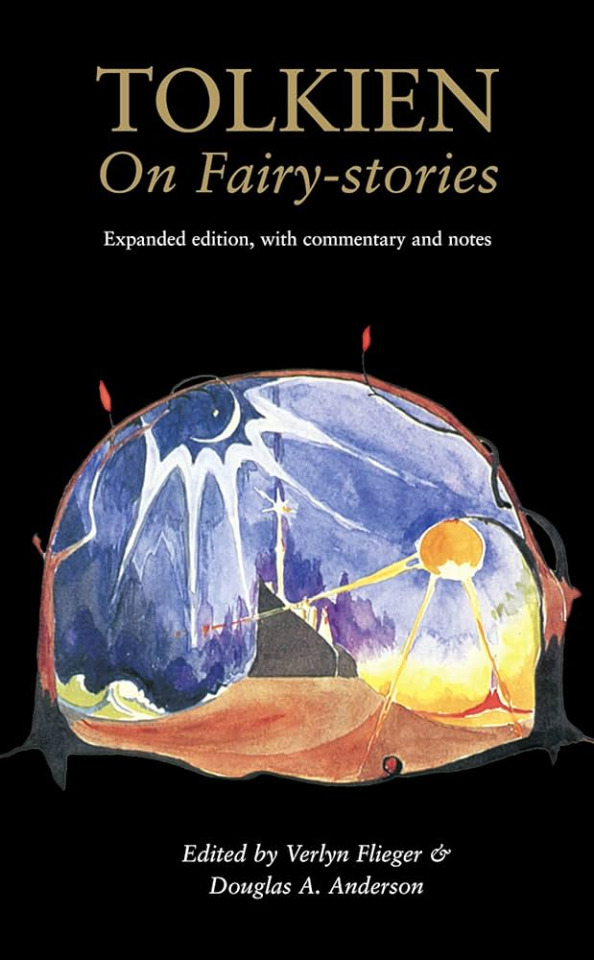
Beatrice Phillports, Mermaids
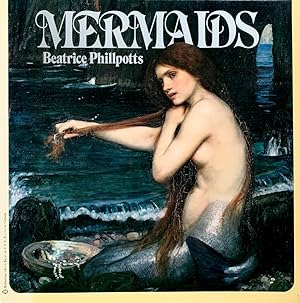
Richard Carrington, Mermaids and Mastodons

Gwen Benwell and Arthur Waugh, Sea Enchantress
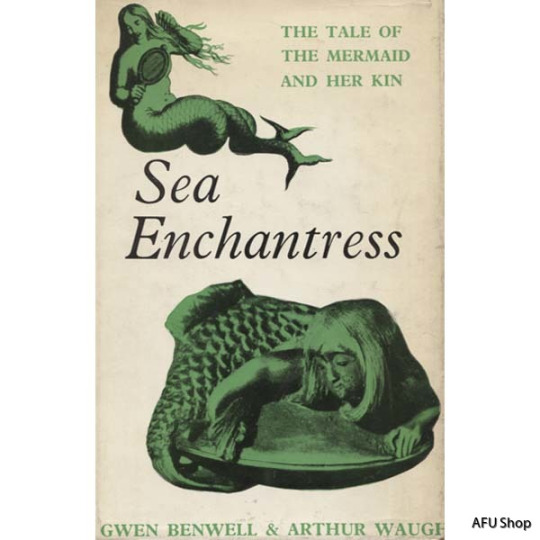
The Lost Gods of England, Brian Branston

Wilfrid Bonser, A bibliography of folklore

Masaharu Anesaki, Japanese Mythology (also known as the History of Japanese Religion)

F. J. Child, The English and Scottish Popular Ballads

Moncure Daniel Conway, Demonology and Devil Lore

T. C. Croker, Fairy Legends and Traditions of the South of Ireland
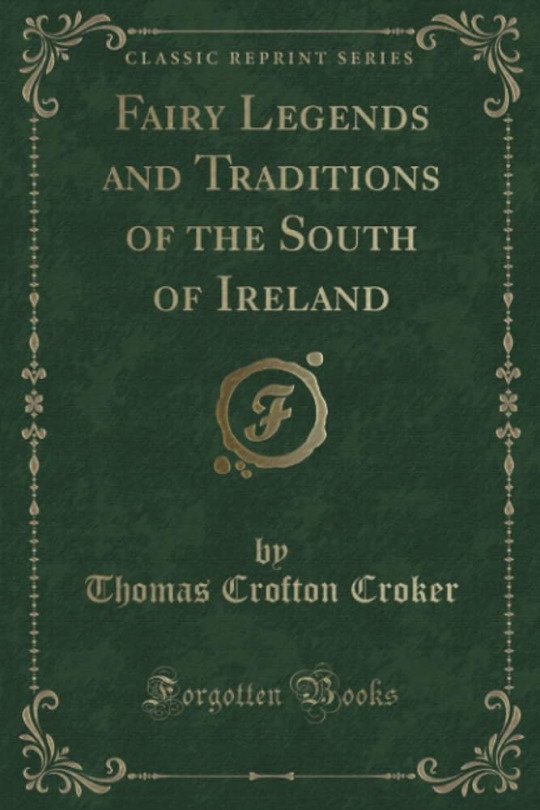
N. Belfield Dennys, The Folklore of China [The book has the very unfortunate subtitles "and its affinities with that the Aryan and Semitic races", but it was written in the 19th century so...)

David Crockett Graham, Songs and Stories of the Ch'uan Miao

Thomas Keightley, The Fairy Mythology
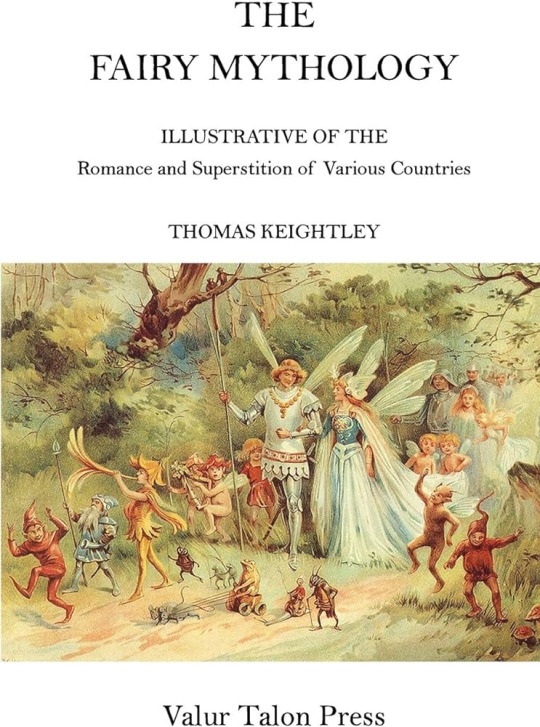
P. Kennedy, Legendary Fictions of the Irish Celts

John Rhys, Celtic Folklore: Welsh and Manx
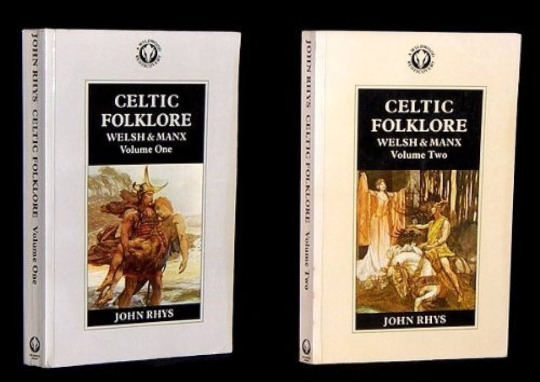
Sir George Webb Dasent's translation of Popular Tales from the Norse

The Norse Myths (as rewriten by Crossley)
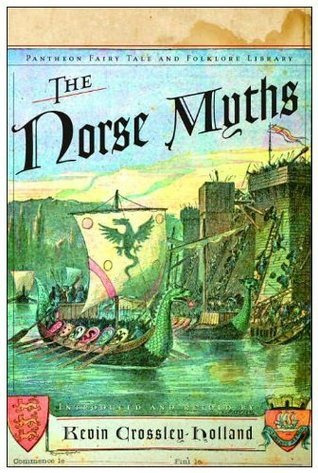
Delaporte Press' Great Swedish Fairy Tales, illustrated by John Bauer

Inger and Edgar Parn d'Aulaire, D'Aulaire's Trolls (also known as D'Aulaire's Book of Trolls)
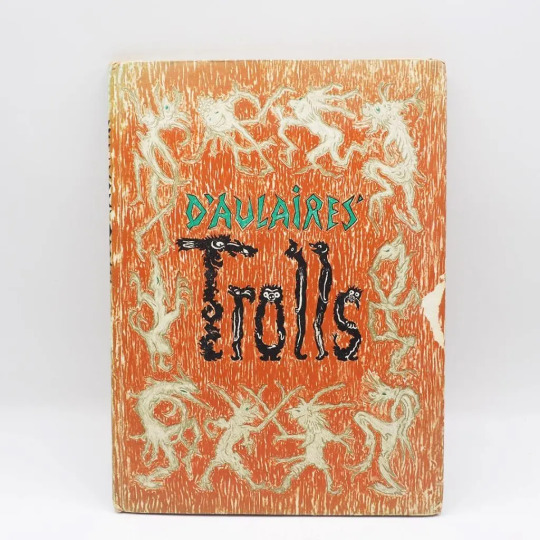
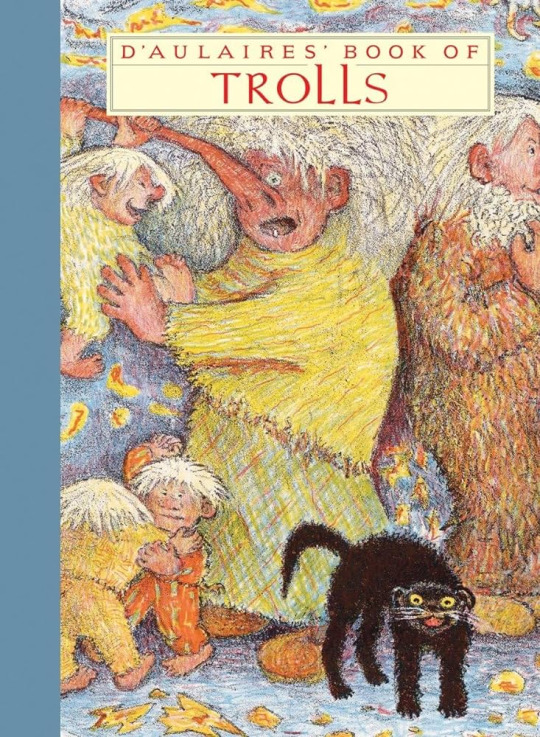
The Florence Ekstrand edition of Theodore Kittelsen's Norvegian Trolls and Other Tales
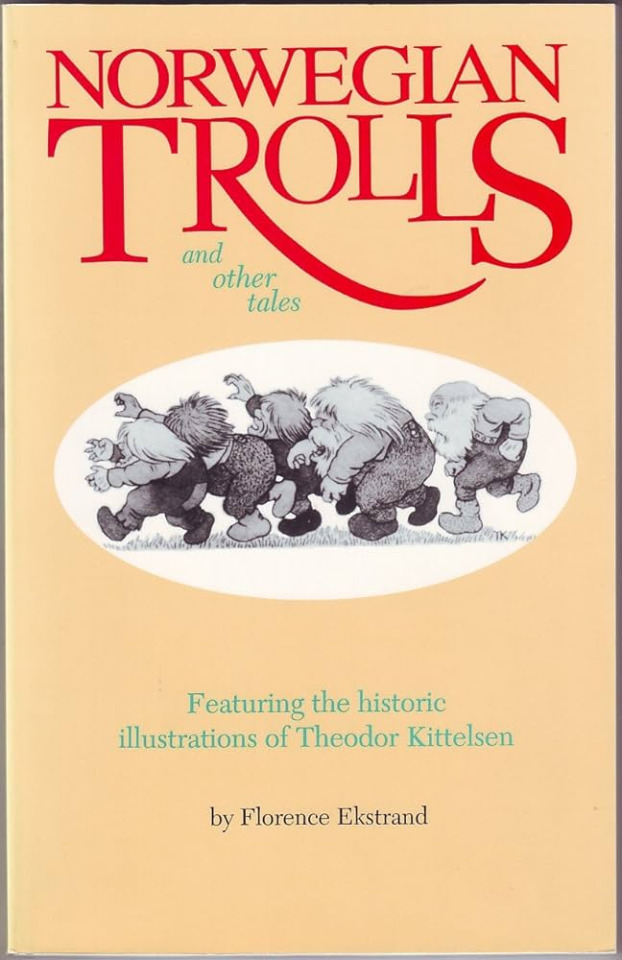
G. Fox, The Archaeology of the Cambridge Region

Edward L. Gardner, Fairies

M. Geoffrey Hodson, The Kingdom of the Gods

Sir Arthur Conan Doyle, The Coming of the Fairies
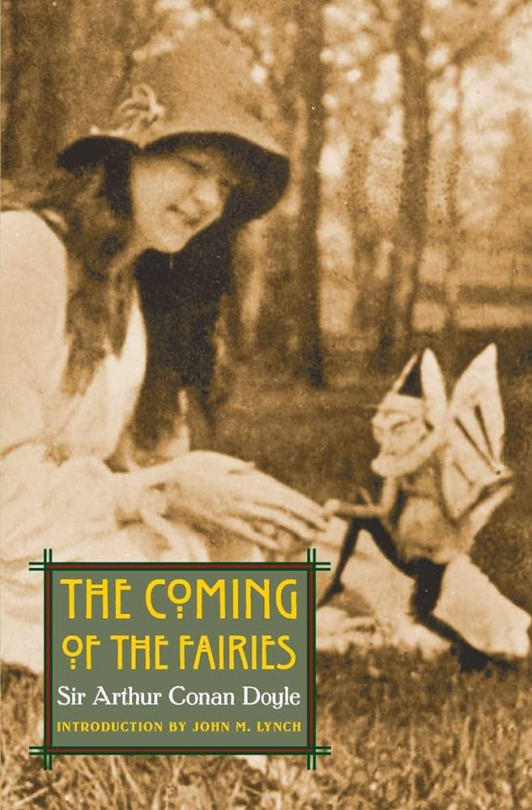
Walter Burkert, Ancient Mystery Cults

Sabine Baring-Gould, Curious Myths of the Middle Age
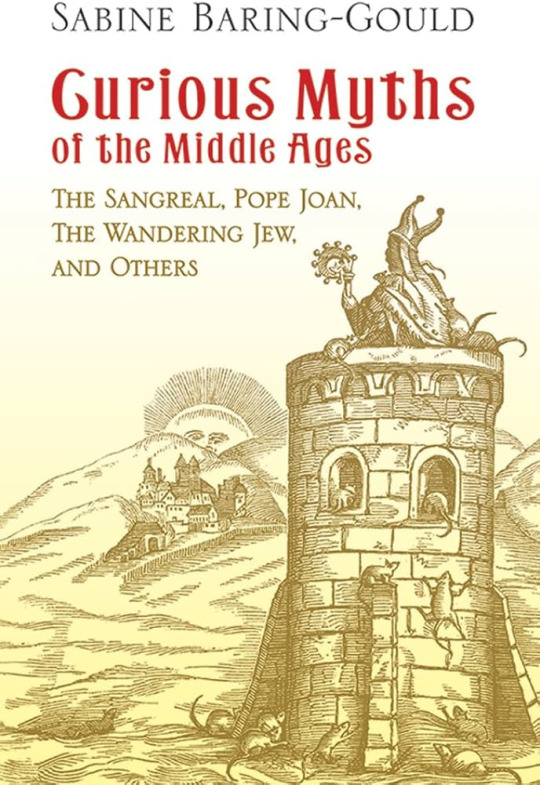
#pierre dubois#bibliography#book list#resources#fairy tales#fairytales#book resources#mythology#folklore#folklores#fairies#fairy#fairy book#mermaids
12 notes
·
View notes
Note
Hey so I'm a self-taught witch who practices independently and I was hoping to learn a little bit from others as well. Do you have any books/resources/people you recommend looking into?
Hi there!
I'm a self-taught witch as well and I'm still at the beginning of my journey, at the moment I'm yet to finish the big blue book Buckland's Complete Book of Witchcraft of which I'm also sharing the lessons (you can find tose posts in my archive here) so for now I can only really recommend that one, but I'm marking down all the recommendend supplementary redings at the end of every lesson if you wanna check them out!
I'm also reading a very interesting and complete book about tarot called Holistic Tarot which i really recommend, it's a bit expensive maybe but it's totally worth it
Other than that I can write down here the list of recommended reading at the end of the blue book (with extra books other than the ones already listed at the end of every lesson), I can't recommend those personally (even if I did buy some of them but I still have to read them) but I think they're worth a shot if you'd like to know more, I'll add the other two I mentioned above in the list, in any case if you find other books online read carefully all the reviews cause many books are not serious about this topic
Also I'm not sure but I think these books below are all from white people and mainly about white cultures (and most of them are very old), so If you (or anyone else) have some recommendations about other cultures' book about witchcraft or ancient traditions I'd be glad to know more about that too!
As for people and other resources, I follow some witches on Twitter that shares interesting stuff, it would be too long to link all of their profiles so I can give you directly the list of people I follow here
I hope you'll find this helpful~
Color Healng by Mary Anderson
Gods and Goddesses of Ancient Greece by Edward E. Jr Barthell
Crystal Gazing by Theodore Besterman
I-Ching: The Book of Changes by J. Blofeld
Primitive Song by C. M. Bowra
Gerald Gardner: Witch by J. L. Bracelin
The Lost Gods of England by Brian Branston
Development of Religion and Thought is Ancient Egypt by J. H. Breasted
Buckland's Complete Book of Witchcraft / Amazing Secrets of the Psychic World / Color Magick / Gypsy Dream Dictionary / A Pocket Guide to the Supernatural / Practical Candleburning Rituals / Scottish Witchcraft & Magick / The Tree: Complete Book of Saxon Witchcraft / Wicca For Life / The Witch Book: Encyclopedia of Witchcraft, WIcca and Neopaganism / Witchcraft From the Inside by Raymond Buckland
The Holy Book of Women's Mysteries by Zsuzsanna Budapest
Amulets and Talismans by Sir E. A. Wallis Budge
Egyptian Language by Oxford University Press
How to Read the Aura, Practice Psychometry, Telepathy and Clairvoyance by W.E. Butler
Ancient Ways by Dan and Pauline Campanelli
Handbook of Unusual and Unorthodox Healing by J. V. Carney
Handbook of Bach Flower Remedies by Philip M. Chancellor
Color Therapy by Linda Clark
Precious Stones: Their Occult Power and Hidden Significance by W. B. Crow
Lid Off the Cauldron / The Witches Speak Athol by Patricia Crowther
Complete Herbal by Nicholas Culpeper
Earth Power / Living Wicca / Magical Herbalism by Scott Cunningham
Practical Guide to Astral Projection by Melita Dennings and Osborne Phillips
The Silent Path by Michael Eastcott
Patterns of Comparative Religion / Rites and Symbols of Initiation - Birth and Rebirth by Mircea Eliade
The Dream Game by Ann Faraday
What Witches Do / Eight Sabbats For Witches / The Witches' Way by Janet and Stewart Farrar
Magical Rites From the Crystal Well by Ed Fitch
The Golden Bought by Sir James G. Frazer
The Wisdom of Pagan Philosophers by Timothy Freke and Peter Gandy
Totem and Taboo by Sigmund Freud
Witchcraft Today / The Meaning of Witchcraft / High Magic's Aid / A Goddess Arrives by Gerald Gardner
Complete Herbal by Gerard
Stalking the Healthful Herbs by Euell Gibbons
Witchcraft, the Sixth Sense, and Us by Justine Glass
Seasonal Occult Rituals by William Gray
The Encyclopedia of Witches and Witchcraft by Rosemay Ellen Guiley
Ancient Art and Ritual Kessinger by Jane E. Harrison
Palmistry, the Whole View by Judith Hipskind
Myth and Ritual by S. H. Hooke
Witch: A Magickal Journey by Fiona Horne
The Runes and Other Magical Alphabets by Michael Howard
Witchcraft by Penethorne Hughes
Memories Dreams and Reflections by Carl G. Jung
Aradia, Gospel of the Witches of Italy by Charles Godfrey Laland
Witches: Investigating an Ancient Religion / Gogmagog - the Buried Gods by T. C. Lethbridge
Healing For Everyone by E. Loomis and J. Paulson
Numerology by Vincent Lopez
Commond and Uncommond Uses of Herbs of Healthful Living by Richard Lucas
The Herb Book by John Lust
Pagan Parenting by Kristin Madden
Witta: An Irish Pagan Tradition by Edain McCoy
The Principles and Practice of Radiesthesia by Abbè Mermet
The Hearbalist by J. E. Meyer
The Craft by Dorothy Morrison
Green Witchcraft series by Ann Aoumiel Moura
Sexual Occultism by John Mumford
The Family Wicca Book by Ashleen O'Gaea
Reclaim the Power of the Witch by Monte Plaisance
Potter's New Cyclopedia of Botanical Drugs and Preparations by R. C. Potter
How to Make and Use Talismans / The Art of True Healing by Israel Regardie
The Seventh Sense by Kenneth Roberts
High Magic's Aid by Scire
The Book of Charms and Alisman by Sepharial
The Spiral Dance by Starhawk
The Devil in Massachusetts by Marion L. Starkey
Medical Palmistry by Marten Steinbach
Is This Your Day? by George S. Thommen
Magic and Healing by C. J. S. Thompson
Where Witchcraft Lives / An ABC of Witchcraft Past and Present / Witchcraft For Tomorrow by Doreen Valiente
The Rites of Passage by Arnold Van Gennep
Herbal Manual by H. Ward
Holistic Tarot by Benebell Wen
The I-Ching by R. Wilhelm
The Christians As the Romans Saw Them by Robert L. Wilken
The Complete Idiot's Guide to Wicca and Witchcraft by Denise Zimmermann and Katherine A. Gleason
#witch blog#witch#book of witchcraft#witchblr#witchcraft beliefs#philosophy of witchcraft#history of witchcraft#witches#witchcraft#reading recommendations#introduction to witchcraft#witches of tumblr#books about witchcraft#books recommendations#witchcraft resources#medusa's answers
13 notes
·
View notes
Note
Hiii I was so intrigued by your last ask, I just had to reach out! What would you say are your top five myth/fairytale/occult books (like 5 in total is fine :) ) I love mythology but I’m struggling to find books to read! Thanks hope you’re having a good day!! ❤️
Hi! Sorry for the wait!
Not sure how much this will help since my collection is still very small. I don't actively hunt down the books for my collection. I usually find them casual in bookstores or in second hand stores.
Most of my books are centered around Norse mythology and occult/folklore since I'm from Sweden , but I want to buy books about other mythologies. I am eyeing this book " Myths & Legends" by Philip Wilkinson. Once C-Virus ends I will see if my local library has it so I can decided if I like and I’m curious about another book he wrote about symbolism too.
Here is a list of what I currently own:
(Swedish only) Monster & Vidunder: Lexikon över världens väsen by Kristoffer Gustaffson.
Gods and Heros from Viking Mythology by Brian Branston.
Vaesen : Spirits and monsters of Scandinavian folklore AND Norse gods by Johan Egerkrans.
The Occult Book: A Chronological Journey, from Alchemy to Wicca by John Micheal Greer.
As for fairy tales I own a few versions of Brothers Grim , as well a book (the third part) of a collection about One and A thousand nights. The book tells about Scheherazade stories from night 353 to 480.
I’m gonna be honest but I haven’t finished reading them all yet , but the beauty of these books are that you can read one chapter at a time and not feel rushed finishing the whole book.
If I could only recommend 1 book I suggestion on Egerkrans Norse Gods. It gives you information of each god , one or more story involving the god or beings that either the gods fought or helped them in tasks + the artwork is beautiful! His book about Scandinavian supernatural creatures are a gem too.
4 notes
·
View notes
Photo

Taken from Gods & Heroes from Viking Mythology by Brian Branston, 1978
Artwork by Giovanni Caselli
43 notes
·
View notes
Text

first of all, welcome to all of our new followers! we are so excited to continue to share our site with you and rev up the excitement! now, we have our biggest document to share with you -- our canon list.
here at noyade, you will see that we host a large, fairly open canon list. we want to give you all as much inspo as you need, but also leave it open-ended for your own creativity. there are a few easter eggs in this document, however, regarding canon deaths and allegiances that have been predetermined in order to align with the overall site plot. also, while we do want to leave things open, we highly recommend looking at the harry potter wiki for information about a canon. it’s highly possible we forgot some names or mucked up -- please send an ask our way so we can fix it before the grand opening!
be on the lookout for reserves very, very soon! and don’t hesitate to send any questions our way.
ABBOTT
pureblood
ABERCROMBIE
open blood status
ACKERLEY
open blood status
AGRIPPA
open blood status
AVERY
pureblood
BADDOCK
open blood status
BAGMAN
open blood status
LUDOVIC --- BAGMAN
OTTO --- BAGMAN
BAGNOLD
open blood status
MILLICENT --- BAGNOLD
BARBARY
open blood status
BELBY
open blood status
BINNS
open blood status
CUTHBERT --- BINNS
BISHOP
open blood status
BLACK
pureblood
BELLATRIX --- BLACK
ANDROMEDA --- BLACK
NARCISSA --- BLACK
BLACK
pureblood
SIRIUS --- BLACK
REGULUS ARCTURUS BLACK
sirius is a current or former member of the order of the phoenix.
BLETCHLEY
open blood status
BLUDD
blood status
the blood family are vampires.
BOARDMAN
open blood status
BOBBIN
open blood status
BODE
open blood status
BONES
open blood status
AMELIA --- BONES
EDGAR --- BONES
--- --- BONES
edgar is a current or former member of the order of the phoenix.
BOOT
open blood status
BORAGE
open blood status
BORGIN
open blood status
BRAITHWAITE
open blood status
BRANSTONE
open blood status
BROADMOOR
open blood status
BROCKLEHURST
open blood status
BROWN
open blood status
BULSTRODE
pureblood
BURBAGE
open blood status
BURKE
open blood status
CADWALLADER
open blood status
CAMPBELL
open blood status
CARMICHAEL
open blood status
CARROW
pureblood
AMYCUS --- CARROW
ALECTO -- CARROW
CATCHLOVE
open blood status
CATTERMOLE
open blood status
CHAMBERS
open blood status
CHANG
open blood status
COOTE
open blood status
CORNER
open blood status
CRABBE
open blood status
CRESSWELL
open blood status
CROUCH
pureblood
BARTEMIUS CASPAR CROUCH JR.
CUFFE
open blood status
DAVIES
open blood status
DAWLISH
open blood status
DEARBORN
open blood status
CARADOC --- DEARBORN
caradoc is a current or former member of the order of the phoenix.
DELACOUR
open blood status
DERWENT
open blood status
DEVERILL
open blood status
DIGGLE
open blood status
DEDALUS --- DIGGLE
dedalus is a current or former member of the order of the phoenix.
DIGGORY
open blood status
AMOS --- DIGGORY
DIPPET
open blood status
DOBBS
open blood status
DOGE
open blood status
ELPHIAS --- DOGE
elphias is a current or former member of the order of the phoenix.
DOLOHOV
open blood status
ANTONIN --- DOLOHOV
DUMBLEDORE
halfblood
ALBUS PERCIVAL WULFRIC BRIAN DUMBLEDORE
ABERFORTH --- DUMBLEDORE
ARIANA --- DUMBLEDORE
albus is the creator of the order of the phoenix. aberforth is a current or former member of the order of the phoenix.
DURSLEY
muggle
VERNON --- DURSLEY
D’EATH
open blood status
LORCAN --- D’EATH
the d’eath family are vampires.
EDGECOMBE
open blood status
ELDRITCH
open blood status
ENTWHISTLE
open blood status
EVANS
muggleborn
PETUNIA --- EVANS
LILY JOANNA EVANS
lily is estranged from her husband, james potter. her son, harry, was murdered by voldemort.
FAWCETT
open blood status
FAWLEY
pureblood
FENWICK
open blood status
BENJY --- FENWICK
benjy is a current or former member of the order of the phoenix.
FIGG
open blood status
ARABELLA --- FIGG
arabella is a current or former member of the order of the phoenix. she is also a squib.
FINNIGAN
open blood status
FLETCHER
open blood status
MUNDUNGUS --- FLETCHER
mundungus is a current or former member of the order of the phoenix.
FLINT
pureblood
FLITWICK
open blood status
FILIUS --- FLITWICK
FORTESCUE
open blood status
FLOREAN --- FORTESCUE
FROBISHER
open blood status
FUDGE
open blood status
CORNELIUS --- FUDGE
GAMP
open blood status
GRAVES
open blood status
GREENGRASS
pureblood
GREGOROVITCH
open blood status
GUDGEON
open blood status
DAVEY --- GUDGEON
HAGRID
halfblood / tainted
RUBEUS --- HAGRID
rubeus is a current or former member of the order of the phoenix.
HARKISS
open blood status
HOOCH
open blood status
ROLANDA --- HOOCH
HOOKUM
open blood status
DAISY --- HOOKUM
HOOPER
open blood status
HOPKIRK
open blood status
HORNBY
open blood status
JENKINS
open blood status
JOHNSON
open blood status
JONES
open blood status
HESTIA --- JONES
GWENOG --- JONES
it is up to the player to determine the relation -- if any -- between hestia and gwenog.
JORDAN
open blood status
JORKINS
open blood status
BERTHA --- JORKINS
ALBERT --- JORKINS
JUGSON
open blood status
KARKAROFF
open blood status
KETTLEBURN
open blood status
SILVANUS --- KETTLEBURN
KIRKE
open blood status
KOVACS
open blood status
KRUM
open blood status
LAPIN
open blood status
LESTRANGE
pureblood
RODOLPHUS --- LESTRANGE
RABASTAN --- LESTRANGE
LEVSKI
open blood status
LI
open blood status
LOCKHART
open blood status
GILDEROY --- LOCKHART
LONGBOTTOM
pureblood
FRANK --- LONGBOTTOM, NPC
ALICE --- LONGBOTTOM (nee open surname)
frank is a npc and resides in st. mungo’s after being tortured by death eaters when voldemort came to murder the longbottom son, neville. alice survived.
LOVEGOOD
open blood status
XENOPHILIUS --- LOVEGOOD
LUPIN
halfblood
REMUS JOHN LUPIN
LYNCH
open blood status
MACDONALD
open blood status
MARY --- MACDONALD
MACMILLAN
pureblood
MACNAIR
open blood status
MADLEY
open blood status
MALFOY
pureblood
LUCIUS --- MALFOY
MARAT
open blood status
MARSH
open blood status
MAXIME
open blood status
OLYMPE --- MAXIME
MCCORMACK
open blood status
MCGONAGALL
halfblood
MINERVA --- MCGONAGALL
ROBERT --- MCGONAGALL
MALCOLM --- MCGONAGALL
MCKINNON
halfblood
MARLENE MCKINNON
marlene + her family were murdered by death eaters.
MCLAGGEN
open blood status
MEADOWES
pureblood
DORCAS --- MEADOWES
MONTAGUE
open blood status
MONTGOMERY
open blood status
MONTOYA
open blood status
MOODY
open blood status
ALASTOR --- MOODY
MOON
open blood status
MORGAN
open blood status
MOSTAFA
open blood status
NOTT
pureblood
ODDPICK
open blood status
OGDEN
open blood status
OLLIVANDER
halfblood
GARRICK --- OLLIVANDER
PARKINSON
pureblood
PATIL
open blood status
PEAKES
open blood status
PEASEGOOD
open blood status
PEPPER
open blood status
OCTAVIUS --- PEPPER
PETTIGREW
open blood status
PETER --- PETTIGREW
peter is a current or former member of the order of the phoenix.
PICQUERY
open blood status
SERAFINA --- PICQUERY
serafina is american.
PINCE
open blood status
IRMA --- PINCE
PODMORE
open blood status
STURGIS --- PODMORE
sturgis is a current or former member of the order of the phoenix.
POMFREY
open blood status
POPPY --- POMFREY
POLIAKOFF
open blood status
POTTER
pureblood
JAMES --- POTTER
james is a current or former member of the order of the phoenix. his son, harry, was murdered by voldemort as a result of the prophecy.
PRANG
open blood status
PREWETT
pureblood
MOLLY --- PREWETT
FABIAN --- PREWETT
GIDEON --- PREWETT
gideon was murdered by voldemort while watching the potter’s son, harry. fabian is a current or former member of the order of the phoenix.
PUCEY
open blood status
PYE
open blood status
QUIGLEY
open blood status
QUIRRELL
open blood status
QUIRINUS --- QUIRRELL
RIDDLE
halfblood
TOM MARVOLO RIDDLE
ROBINS
open blood status
ROOKWOOD
open blood status
ROSIER
pureblood
ROWLE
pureblood
RUNCORN
open blood status
SATO
open blood status
SCAMANDER
open blood status
SCRIMGEOUR
open blood status
SELWYN
pureblood
SHACKLEBOLT
pureblood
KINGSLEY --- SHACKLEBOLT
SHAFIQ
pureblood
SHUNPIKE
open blood status
SINISTRA
open blood status
AURORA --- SINISTRA
SKEETER
open blood status
RITA --- SKEETER
SLOPER
open blood status
SLUGHORN
pureblood
HORACE --- SLUGHORN
SMETHWYCK
open blood status
SMITH
open blood status
SNAPE
halfblood
SEVERUS TOBIAS SNAPE
SPINNET
open blood status
SPROUT
open blood status
POMONA --- SPROUT
THICKNESSE
open blood status
THOMAS
open blood status
THRUSTON
open blood status
TIMMS
open blood status
TONKS
muggleborn
EDWARD --- TONKS
TOOTS
open blood status
TOTH
open blood status
TOWLER
open blood status
TRAVERS
pureblood
TRELAWNEY
open blood status
SYBILL --- TRELAWNEY
sybill is a seer and presented a prophecy that led to the deaths of harry potter and neville longbottom. she is currently captured by voldemort.
TREMLETT
muggleborn
TROY
open blood status
TWYCROSS
open blood status
UMBRIDGE
open blood status
DOLORES --- UMBRIDGE
URQUHART
open blood status
VAISEY
open blood status
VANE
open blood status
VANCE
open blood status
EMMELINE --- VANCE
VECTOR
open blood status
WAGTAIL
open blood status
WATANABE
open blood status
WARBECK
open blood status
CELESTINA --- WARBECK
WARRINGTON
open blood status
WEASLEY
pureblood
ARTHUR --- WEASLEY
BILIUS --- WEASLEY
WHITBY
open blood status
WILKES
open blood status
WINTRINGHAM
open blood status
WOOD
open blood status
YAXLEY
open blood status
YEN
open blood status
ZABINI
open blood status
ZELLER
open blood status
ZONKO
open blood status
3 notes
·
View notes
Photo

Branston, Brian - Gods of the North (1955)
PDF
1 note
·
View note
Photo

The “Giantess” Night, a detail from an illustration of Night and Day by Giovanni Caselli in Brian Branston’s Gods & Heroes from Viking Mythology.
Night and Day, in their “chariots” follow each other around Earth thought of as a Goddess and as a daughter of Odin and Night.
60 notes
·
View notes
Text
Aliments of Peter Pan Syndrome
Aliments of Peter Pan Syndrome – Power Source (2017), tracing paper, graphite, Photoshop, 1 minute 2 seconds
Aliments of Peter Pan Syndrome – Tapped (2017), tracing paper, graphite, Photoshop, 1 minute 13 seconds
Aliments of Peter Pan Syndrome – Connected (2017), tracing paper, graphite, Photoshop, 1 minute 17 seconds
Aliments of Peter Pan Syndrome (2017) consists of three, minute long animations. Featuring what I describe as fantastical succulent interruptions my drawings interrupt the dull mundane of my domestic suburbia interior. This project is an expansion of my previous project from last semester. By inventing Succulent Morphology these works playfully explore Gen Y’s apparent need to escape everyday reality through an obsession of preternatural worlds.
Following on from my previous project, I continue to explore succulent imagery on photographs of my domestic environment that examines my active obsession for escaping into fantastical literature.
These works are designed using Photoshop to digitally manipulate multiple hand-drawn images over black and white photos of my interior. The layers are animated using Adobe Premiere so the succulents slowly grow out and overtake the space in the photo. After they have grown the succulents will then shrivel up and decay so the image returns to the original black and white interior. The animation then loops back to the start and repeats. An important point from my previous project was I was lacking a critical edge to my work, I aim to address that by having the succulents shrivel up and decay, and have it as a metaphor for moments when dark places can consume one’s life. The animated drawings achieve this by having the succulents’ bright colours on a dull black and white background but then erode to rotten colours and vanish completely.
Why succulents. They are a unique species of plant that look so strange but normal at the same time. As a subject, I use them as a small doorway into the fantastical through the mundanity of suburbia world. They are very resilient and hard to kill, they can grow just about anywhere. It’s like my fantasy obsessiveness, no matter how much people tell me fairies, trolls and werewolves aren’t real it won’t kill my love or search for the fantastical. So, for this project I have invented succulent morphology, the study of the succulents’ exteriors. In choosing a botanical form to be the shape of my fantastical interruptions because plants have a rich foundation for fantasy in which they have magical properties. This is seen in many fairy tales such as The Three Snake-Leaves by Brothers Grimm in which the leaves can return the dead to life (Race Point Publishing, 2013). In Norse mythology Yggdrasill is a magnificent tree that connects all nine realms together (Branston, 1978). Even the seeds contain the source for magic, in the Greek myth of Hades and Persephone he tricks his kidnapped bride into eating pomegranate seeds so even when she leaves the Underworld she will always return to him for a short span of the year (Larsen, 2016). This relates to my animations because plants from these mythologies don’t look unnatural, they are familiar and ordinary but have magic rooted in them. This is also achieved through the animation. Watching the succulents grow and decay has a mesmerising and almost magical feel about them that makes them have an otherworldly atmosphere.
My work deals with my need for the fantastical and escaping from the dull and ordinary, of which I do through literature. In constantly seeking out the preternatural, innocent, spiritual and harmonious way in everyday life. This project is a like a metaphor for my desire of fantasy. Over many years fantasy has taken root in my mind, growing and filling out all the space. There are moments in my life where events and circumstances have stifled that growth and withered it down to nothing but it always flourishes back to life, after lying dormant it sprouts and evolves, swelling into something just as big and beautiful as before.
As a Millennial, we are infamous for being very tech. savvy, rejection of traditional rites of passage into adulthood, and dependence on the internet. Author Sally Bibb accurately describes the aspects of Generation Y in her book Generation Y for Rookies (2014) which illustrates the qualities, personality traits, work ethics and circumstances that have shaped how Millennials have become the way they are; including disregard for hierarchy or authority, rejection of competitive conflict solving, perforation to collaboration, exposure to internet and technology, difficultly job finding (because of unwillingness to work the hours or finding a skill-appropriate position), creative and initiative, and more politically disengaged (Bibb, 2014). I agree with many of these claims but feel some are more subjective than others.
Bibb also mentions in her book the experiences that influenced my generation acts of global terrorism, marriages that result in higher rates of divorce and difficulty in saving money for houses and cars (Bibb, 2014). These events have left many Millennials with a longing to stay a child and never grow up or to escape from reality all together, the Peter Pan Generation. I respond to this through art. I have always wanted to escape back into my childhood, back into the fantasy and as far away from reality as possible.
My work, Aliments of Peter Pan Syndrome, is not unlike George Gessert’s practice as it is the study of botanical exteriors (morphology), the appearance of a plant, Snowy Donkey (2004) is an iris he crossbred and grew until it bloomed. If Gessert did not like the appearance of the flower, he would recycle it and start a new hybrid breed. Because I am exploring morphology, the study of the plant’s exterior – the appearance, I am doing what Gessert is doing which is focusing on how the plant looks. We are both also exploring an invented morphology, he created his own by cross breeding his plants and I’ve created my own through my succulents.
The idea for this project was inspired by Tomm Moore, a filmmaker and animator, after watching many his films, particularly Song of the Sea (2014). The beautiful artistic style and animation form encouraged me to pursue the idea of animating the succulents from my previous work. Initially I had planned to have a very flush, digital finish to my animation style, like some of the styles Moore uses. However, after my previous critic it was suggested that this approach wasn’t appropriate for my subject. The time it would have taken to animate in that style would’ve taken far too long and wouldn’t be done in time. Since I had decided to use hand drawn images I had to look at artists who utilised a similar method such as William Kentridge.
My initial plan for presenting was just to project the animations using projectors onto a wall. After looking Diana Thater practice I realised this approach was as dull and boring as my domestic environment. I was intrigued how she used screens and projections in ways I hadn’t even considered, angling them and projecting them onto the wall and ceiling, clustering screens together in an arrangement. After looking at her work I had wanted to wall mount a series of monitors in a cluster formation, like the growth and clustering of succulents, and have the animations play on loop. But after being introduce to these black plinths which were so good I decided to arrange them on the plinths instead, still following the clustered idea.
This project is a continuation of my exploration into escaping reality through fantasy. I have achieved this in my work by creating three, minute animations featuring fantastical interrupting succulents in my domestic suburbia interior. I have aimed to fix the issues identified in my previous project and expand it.
REFERENCE LIST
Bibb, Sally. 2014. Generation Y for Rookies. LID Publishing. ISBN:9780462099804
Race Point Publishing. 2013. “The Three Snake-Leaves” in The Complete Grimm’s Fairy Tales. Page, 60-62. New York, USA.
Branston, Brian. 1978. “Yggdrasill, the World Ash” in Gods & Heroes from Viking Mythology. Page, 31-36. New South Wales, Australia.
Larsen, Kristine. 2016. “The Lessons of Nature in Mythology” in Mythlore. Vol. 34, no. 2, 2016, p. 191+. Expanded Academic ASAP, go.galegroup.com/ps/i.do?p=EAIM&sw=w&u=griffith&v=2.1&id=GALE%7CA453915650&it=r&asid=4b72e4eea1cfef3007bbe6af0aa15518.
Gessert, George. Snowy Donkey. (2004). Iris seeds, soil, fertiliser, flower pot, water. Dimensions variable.
0 notes
Text
The Mini has come highly rated in a list of the 250 Things That Make Britain Great
The list, which is published in the May issue of Best of British, was commissioned to mark the magazine’s 250th issue.
Compiled from suggestions by the magazine’s readers, contributors and staff, the list also recognised Aston Martin, Jaguar and Rolls-Royce along with Black Cabs and the Routemaster Bus.
Famous Mini drivers Paddy Hopkirk and Mr Bean also made the list, alongside Sir Stirling Moss and the late John Surtees.
Asked why the Mini was rated so highly, Hopkirk, who won the 1964 Monte Carlo Rally in a Mini Cooper S, said: “The original Mini was a classless car, a cheap family saloon that was also bought by Bentley owners and the likes of Twiggy, Princess Margaret and Peter Sellers. Although there’s a difference under the bonnet between the original car and BMW’s MINI, it still has bags of personality and a romantic image.”
Other people, places and things on the list that make Britain great include the Queen, Sir David Attenborough, the NHS, driving on the left, caravanning, and fish and chips.
Best of British is the UK’s top nostalgia monthly. It is available from WH Smith and other newsagents. Further information can be found at http://ift.tt/1v7BVax
The 250 Things That Make Britain Great are:
1. Volunteers
2. The Queen
3. Sir David Attenborough
4. Houses of Parliament
5. Sir Winston Churchill
6. The NHS
7. The English Language
8. Marmite
9. Village Fetes
10. Our sense of humour
11. Fish and Chips
12. The Great British Breakfast
13. Macmillan Cancer Support
14. The Royal National Lifeboat Institute
15. Pubs
16. The BBC
17. Red phone boxes
18. Real ale
19. The Beatles
20. Giving up your seat
21. National Museums
22. Brilliant architecture
23. Stunning scenery
24. Cornwall
25. The Mini
26. London Underground
27. Town and city parks
28. Springtime
29. Dad’s Army
30. William Shakespeare
31. Tornado
32. The Brompton
33. Isambard Kingdom Brunel
34. Blackpool trams
35. Our rich musical heritage
36. Ealing Studios
37. Pickles the Dog
38. Tunnock’s wafers and tea cakes
39. The Great Little Trains of Wales
40. The Routemaster Bus
41. Sunday roasts
42. Our friendliness, generosity and kindness to others
43. The Lord Mayor’s Show
44. Bulldogs
45. Cricket
46. Charles Dickens
47. Seeing off the Nazis
48. The Royal & Ancient
49. Bobby Moore
50. Doctor Who
51. A good old cup of tea
52. A murmuration of starlings
53. Cockney Rhyming slang
54. King Edward potatoes
55. Corner shops
56. Our patience
57. The South Wales accent
58. Laura Trott
59. Greasy spoons
60. Llandudno, especially Haulfre Gardens
61. Only Fools and Horses
62. Country cottages
63. Diana Dors
64. Our resilience when times are hard
65. Stephen Hawking
66. The seaside
67. Emmeline Pankhurst
68. The Proms
69. Sir Isaac Newton
70. The Brontë Sisters
71. Aston Martin
72. Alan Turing
73. Our openness and generosity of spirit when newcomers make an effort to fit in
74. The Scouts and Girl Guides
75. Beatrix Potter
76. Melton Mowbray Pork Pies
77. National parks
78. The RSPB
79. The Royal Philharmonic Orchestra
80. Buckingham Palace
81. Morris Dancing
82. British Cheeses
83. The Victoria & Albert Museum
84. Flying Scotsman
85. Coronation Street
86. Steam Rallies
87. Stonehenge
88. The WI
89. Strawberries and Cream
90. The Lake District
91. Beer gardens
92. Big Ben
93. Wimbledon
94. Dame Judi Dench
95. Armed Forces
96. Cornish pasties
97. James Bond
98. The Spitfire
99. Stephen Fry
100. Black cabs
101. The Rolling Stones
102. Dame Maggie Smith
103. Red post boxes
104. Harry Potter
105. Scrumpy Cider
106. Match of the Day
107. Beefeaters
108. Joanna Lumley
109. Sue Ryder
110. Mary Berry
111. Unpredictable weather
112. Jessica Ennis-Hill
113. Morecambe and Wise
114. The Two Ronnies
115. Dame Helen Mirren
116. Tom Baker
117. David Jason
118. Worcestershire Sauce
119. Carry On films
120. Jaguar cars
121. Tony Hancock
122. Michael Palin
123. Chelsea Pensioners
124. Football
125. Rugby
126. Comic Relief
127. Great Ormond Street Hospital
128. Charles Darwin
129. Sir Joseph Bazelgette
130. Monty Python
131. Compulsory Education
132. Sherlock Holmes
133. HP Sauce
134. Mr Bean
135. The Jurassic Coast
136. Record collecting
137. Dry Stone walls
138. Hot Cross buns
139. British Film Institute
140. Rolls-Royce
141. The Grand National
142. Bradley Wiggins
143. Lords cricket ground
144. The Red Arrows
145. Ballroom dancing
146. Andy Murray
147. Seb Coe
148. Midsummer afternoons
149. John Surtees
150. Cumberland sausages
151. Mr Benn
152. Blackadder
153. Haggis, neeps and tatties
154. The Telegraph crossword
155. Roald Dahl
156. James Herriot
157. Driving on the left
158. Churches
159. The Boat Race
160. Bertie Bassett
161. Heritage railways
162. Arboretums
163. Countdown
164. Our coastline
165. The Union Flag
166. Caravanning
167. Queuing
168. Branston pickle
169. The Bisto kids
170. The National Trust
171. The Sky at Night
172. Magna Carta
173. Our seats of learning
174. Our gardens
175. Bangers and Mash
176. Alexander Fleming
177. Stan Laurel
178. Alfred Hitchcock
179. Charlie Chaplin
180. Cream Teas – Devonshire or Cornish
181. Fudge
182. The London Marathon
183. Arctic Roll
184. The Loch Ness Monster
185. The World Wide Web
186. Treacle Sponge and Custard
187. Pork Scratchings
188. Help For Heroes
189. Thomas Telford
190. John Logie Baird
191. Laurence Olivier
192. Mowing the lawn
193. The Queen’s Christmas Message
194. TV dramas
195. Wind-up radios
196. Hovercraft
197. Peter Kay
198. Twiglets
199. Salt and Vinegar crisps
200. Jumble sales
201. Billy Connolly
202. Sir Michael Parkinson
203. The Science Museum
204. Sir Steve Redgrave
205. Cancer Research
206. Nelson’s Column
207. The Presumption of Innocence
208. Band Aid/Live Aid
209. Riding for the Disabled Association
210. Chas & Dave
211. The Pennine Way
212. National Railway Museum
213. Sir Michael Caine
214. Tartan and Tweed
215. Alan Bennett
216. Julia Donaldson
217. Paddy Hopkirk
218. Enid Blyton
219. Age UK
220. Barry Cryer
221. The Natural History Museum
222. English Heritage
223. Battersea Dogs and Cats Home
224. Wallace and Gromit
225. Quality Street
226. Sir Stirling Moss
227. John Lewis/Waitrose
228. Bernard Cribbins
229. Brian Blessed
230. June Whitfield
231. Jorvik Viking Centre
232. Sir Bruce Forsyth
233. Walnut Whip
234. Sir Tony Robinson
235. Art Deco lidos
236. Saucy Seaside postcards
237. Dame Patricia Routledge
238. Ironbridge Gorge
239. Roundabouts
240. The BT Tower
241. Morse Code
242. Guide Dogs for the Blind
243. Steak and Kidney Pudding
244. Bletchley Park
245. Chocolate Orange
246. Bobbies on the beat
247. The Goon Show
248. The Shipping Forecast
249. David Coleman
250. Best of British Magazine
via Blogger http://ift.tt/2s6X6Mb
0 notes
Text
PROJECT PROPOSAL
This project is a continuation of my previous project that investigated my obsession for fantastical literature through escapism and the suburban landscape. The suburban landscape is still a foundational feature in this project because it is my environment, my dull, boring, mundane environment from which I try to escape. Mythology is also prominent content in my work, to me myths and legends are origins of the fantastical. My work is also metaphorical because I’m using fantasy as a metaphor to escape and the botanical objects I plan to use are physical metaphors for fantasy in my project.
I am developing three 30 second animations featuring fantastical succulent interruptions that interrupt the dull mundane of my domestic suburbia interior. This project will be an expansion of my previous project from last semester. For that project, I printed a series of black and white photos and then painted succulents interrupting the normal interior with gauche.
To continue my exploration concepts related to escapism via and the notion of escaping one’s reality and through an obsessive need for fantastical literature. I will concoct an experimental work featuring many elements of my previous works, these are black and white photos of my interior and the interrupting succulents which are fleshy, waxy, hardy, alien but still familiar. This is different from my previous work because instead of showing small snapshots of what I see I’m going to show how fantasy has filled my mind and heart and it’s still growing and overtaking everything. An important from my previous project was I was lacking a critical edge to my work, I aim to address that by having the succulents shrivel up and decay, and have it as a metaphor for moments in my life where I have been in dark places and didn’t think I’d ever claw out of there.
I will hand draw the growth stages of the succulents, then use photoshop to digitally draw multiple layers of images over black and white photos of my interior. The layers will then be animated using adobe premiere so the succulents slowly grow out and overtake the space in the photo. After they have grown the succulents will then shrivel up and decay so the image returns to the original black and white interior. The animation will then loop back to the start and repeat. I have also considered printing off the photos of my interior or stages of the animation as photographs with a white border and painting over them, as I did with my previous project, but I have not decided yet.
The reason I chose succulents is because they are a unique species of plant that look so strange but normal at the same time. To me, they are a small doorway into the fantastical through the mundane world. I’m also fond of them because they are very resilient and hard to kill, they can grow just about anywhere. It’s like my fantasy obsessiveness, no matter how much people tell me fairies, trolls and werewolves aren’t real it won’t kill my love or search for the fantastical. So, for this project I have invented succulent morphology, the study of the succulents’ exteriors.
In choosing a botanical form to be the shape of my fantastical interruptions because plants have a rich foundation for fantasy in which they have magical properties. This is seen in many fairy tales such as The Three Snake-Leaves by Brothers Grimm in which the leaves can return the dead to life (Race Point Publishing, 2013). In Norse mythology Yggdrasill is a magnificent tree that connects all nine realms together (Branston, 1978). Even the seeds contain the source for magic, in the Greek myth of Hades and Persephone he tricks his kidnapped bride into eating pomegranate seeds so even when she leaves the Underworld she will always return to him for a short span of the year (Larsen, 2016).
My work deals with my need for the fantastical and escaping from the dull and ordinary, of which I do through literature, film and pop culture such as Death Note, City of Bones, The Hunt, Dinotopia, Nora and so on. In constantly seeking out the preternatural, innocent, spiritual and harmonious way in everyday life. This project is a like a metaphor for my desire of fantasy. Over many years fantasy has taken root in my mind, growing and filling out all the space. There are moments in my life where events and circumstances have stifled that growth and withered it down to nothing but it always flourishes back to life, after lying dormant it sprouts and evolves, swelling into something just as big and beautiful as before.
As a Millennial, we are infamous for being very tech. savvy, rejection of traditional rites of passage into adulthood, and dependence on the internet. Author Sally Bibb accurately describes the aspects of Generation Y in her book Generation Y for Rookies (2014) which illustrates the qualities, personality traits, work ethics and circumstances that have shaped how Millennials have become the way they are; including disregard for hierarchy or authority, rejection of competitive conflict solving, perforation to collaboration, exposure to internet and technology, difficultly job finding (because of unwillingness to work the hours or finding a skill-appropriate position), creative and initiative, and more politically disengaged (Bibb, 2014). I agree with many of these claims but feel some are more subjective than others.
For example, I feel the disregard that is described by Bibbs, towards those in greater authority, it is seen and I know of many individuals in my generation that do lack in that respect. Bibb also mentions in her book the experiences that influenced my generation acts of global terrorism, marriages that result in higher rates of divorce and difficulty in saving money for houses and cars (Bibb, 2014). These events have left many Millennials with a longing to stay a child and never grow up or to escape from reality all together, the Peter Pan Generation.
My work is not unlike George Gessert’s practice as it is the study of botanical exteriors (morphology), the appearance of a plant, Snowy Donkey (2004) is an iris he crossbred and grew until it bloomed. If Gessert did not like the appearance of the flower, he would recycle it and start a new hybrid breed. However, our practices fall into distinctly different categories, he is bio artist specialising in plant hybridization and my practice falls into the interdisciplinary drawing. Vidya Gastaldon’s artwork Mini Christ in God Mother (2007) also has some similarities with my work. She has created her own fantasy world of abstract hippie and psychedelic aesthetics. Another artist who identifies with my work is Jake Fried, Night Vision (2015). He makes animations by continuously drawing over his drawings, scanning in-between each one, and turning them into minute long animations. Although his work is not explicitly fantasy, there are strong images that suggest fantasy and sci-fi. An artist I share many similarities with is Chris Ware. A common thread between his work and mine is the suburban landscape. In some of his comics’ conversations his characters really suffer from the dullness and repetitive routines of everyday life and longing for something new and exciting.
Until last week, I hadn’t given much consideration as to how I wanted to install my animations. I had planned to just project them onto the wall. But being introduced to Diana Thater’s practice has caused me to scrap that plan and consider different ways of installing my work.
REFERENCE LIST
Bibb, Sally. 2014. Generation Y for Rookies. LID Publishing. ISBN:9780462099804
Race Point Publishing. 2013. “The Three Snake-Leaves” in The Complete Grimm’s Fairy Tales. Page, 60-62. New York, USA.
Branston, Brian. 1978. “Yggdrasill, the World Ash” in Gods & Heroes from Viking Mythology. Page, 31-36. New South Wales, Australia.
Larsen, Kristine. 2016. “The Lessons of Nature in Mythology” in Mythlore. Vol. 34, no. 2, 2016, p. 191+. Expanded Academic ASAP, go.galegroup.com/ps/i.do?p=EAIM&sw=w&u=griffith&v=2.1&id=GALE%7CA453915650&it=r&asid=4b72e4eea1cfef3007bbe6af0aa15518.
Gessert, George. Snowy Donkey. (2004). Iris seeds, soil, fertiliser, flower pot, water. Dimensions variable.
Gastaldon, Vidya. Mini Christ in God Mother. (2007). Watercolour, gouache, acrylic, coloured pencil and graphite on paper. 31 × 36 cm.
Fried, Jake. Night Vision. (2015). Ink and white-out. Duration: 1 minute.
0 notes